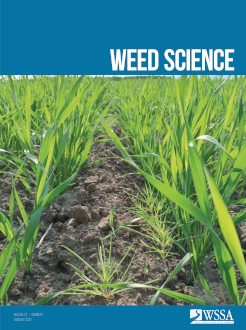Basal bark treatment with triclopyr butoxyethyl ester is used to control woody invasive plants, including Brazilian peppertree (Schinus terebinthifolia Raddi). However, the ester formulation cannot be applied where standing water is present, which includes wetlands where S. terebinthifolia is found. In 2009, a low-volatile acid formulation of triclopyr was labeled for use in aquatic sites, which allows for basal bark applications when standing water is present. This formulation may have utility for controlling woody plants in standing water. However, anecdotal observations of injury to non-target plants following applications during periods of inundation have been reported. To address this, mesocosm studies were conducted to assess non-target injury through triclopyr root exudation or release from the surface of treated stems via flooding. Mesocosms contained S. terebinthifolia as the treated target, while sugarberry (Celtis laevigata Willd.), buttonbush (Cephalanthus occidentalis L.), and red maple (Acer rubrum L.) were included as non-targets. In the first study, the pathway of root exudation for non-target injury following triclopyr (34 g L–1) basal bark application was isolated with activated charcoal placed at the soil surface. In the second study, mesocosms were flooded to assess triclopyr release from the surface of treated stems and subsequent non-target injury. Defoliation of non-target species posttreatment was ≤8%, and triclopyr was detected at ≤5 µg L–1 in mesocosm wells when activated charcoal was present. Posttreatment non-target defoliation up to 92%, coupled with triclopyr concentrations in surface waters and wells as high as 4,637 µg L–1, indicated triclopyr movement as a result of flooding. Additionally, triclopyr non-target injury from soil activity independent of flooding was observed. These findings provide limited evidence of triclopyr root exudation but considerable evidence of triclopyr release during flooding following basal bark treatment and support a cautionary approach to basal bark application when standing water is present.
How to translate text using browser tools
7 November 2023
Physical and Physiological Pathways of Off-Target Triclopyr Movement and Associated Non-Target Injury Following Basal Bark Application
Conrad A. Oberweger,
Stephen F. Enloe,
P. Chris Wilson,
Candice M. Prince,
Benjamin P. Sperry,
Francisca O. Hinz
ACCESS THE FULL ARTICLE

Weed Science
Vol. 72 • No. 1
January 2024
Vol. 72 • No. 1
January 2024
Auxin herbicides
Brazilian peppertree (Schinus terebinthifolia Raddi)
buttonbush (Cephalanthus occidentalis L.)
Invasive plant management
red maple (Acer rubrum L.)
sugarberry (Celtis laevigata Willd.)
Wetlands





